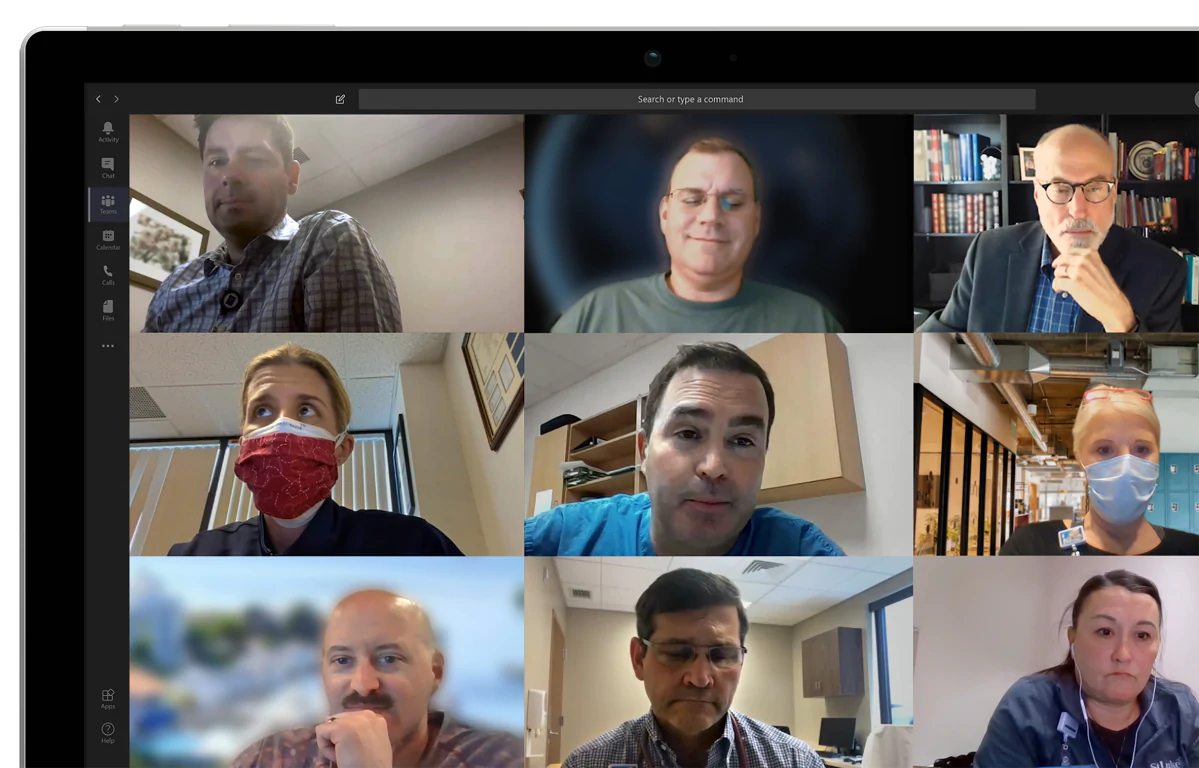Mon, 10 Aug 2020 10:44:43
Staff ![]()
416
It took a while, especially considering the number of people looking for a convenient way to chat and video conferencing these days, but Microsoft has finally created a version of its Business Team app for personal use. The app, which is considered in the preview, is currently only available for mobile devices (iOS and Android). You get 10GB of file storage for your “team” and 2GB of personal file storage per person.
Here's a quick way to use Teams to communicate with friends and family. It is available for iOS and Android; the two applications are very similar. The only difference may lie in the placement of, say, a “Start new chat” button.
Read More: 11 Best Free Apps for Video Calls
This application offers different ways to communicate: chat, audio-only, and video. Everyone who participates must have the app on their device, and you'll also need a Microsoft account (which is relatively easy to sign up for).
- To begin, download the Microsoft Teams app from the iOS App Store or Google Play Store. Sign in with your Microsoft account; if you don’t have one, you can sign up at this point. It’s free.
- If your workplace uses Microsoft Office, you will be asked to either select your organization or to create a personal account. In this case, tap on “Personal.”
- At this point, you’re told that others will be able to find you either using your phone number or your Microsoft email address. This information isn’t made public anywhere, but those who have one or the other (and who hopefully know you) will be able to use them to connect with you on Teams.
- The next screen allows you to sync your contacts with the Team app. It’s not required.
You're now on the home screen for Teams. Tap the pencil/paper icon to start a conversation. Teams let you chat via text, audio, or video.
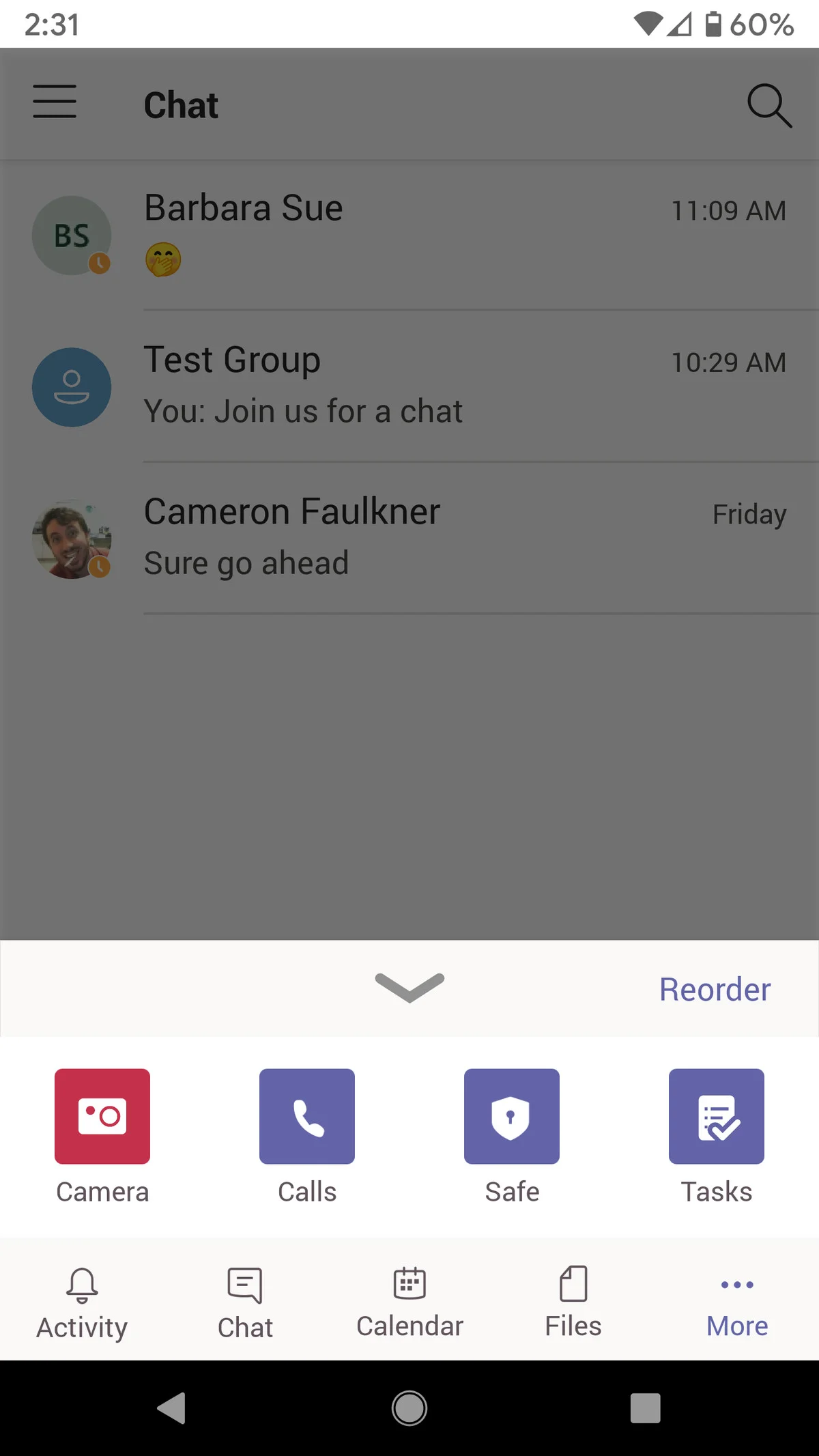
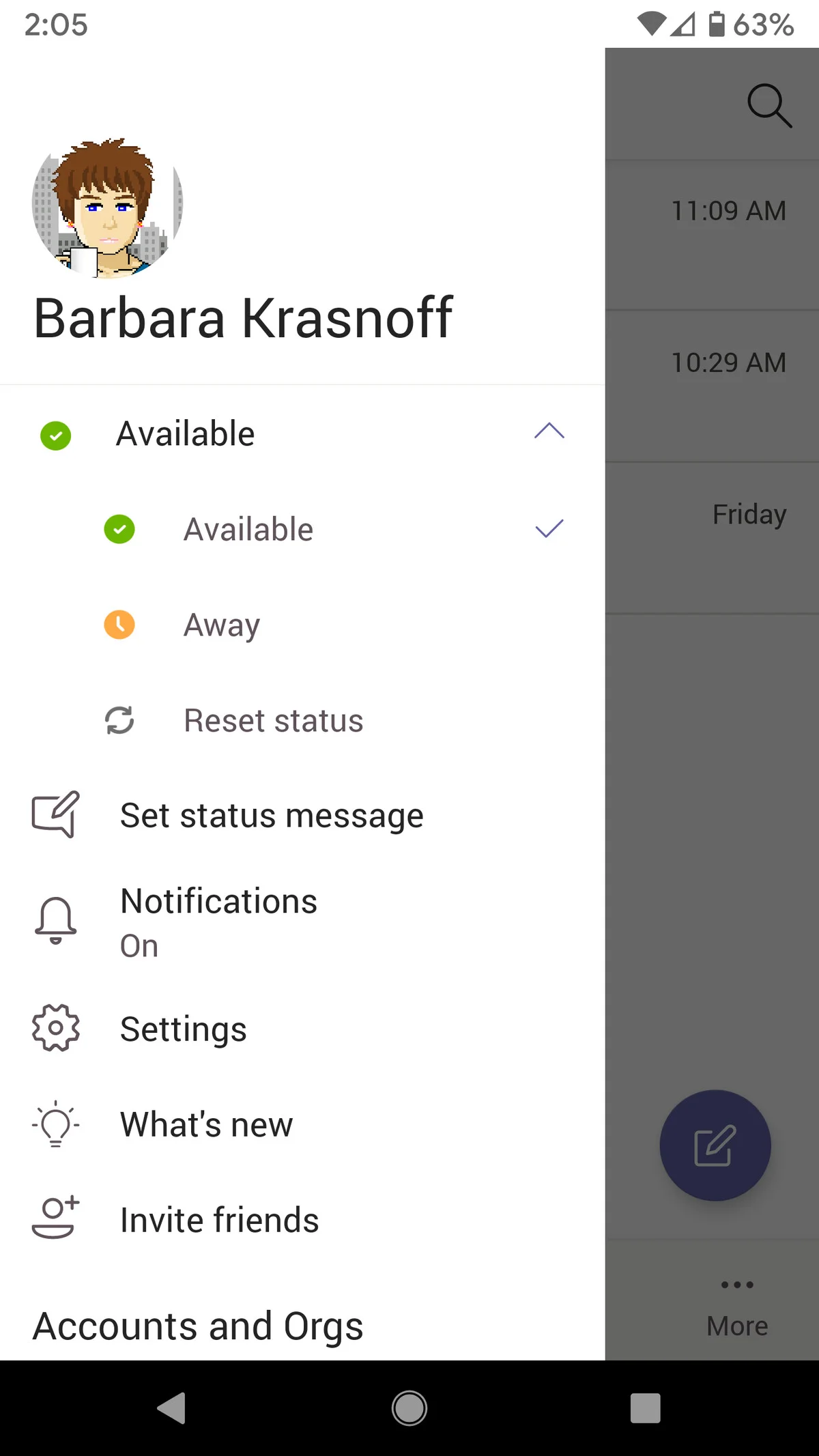
A series of icons along the bottom let you check various activities (such as task updates), enter chats, access your calendar, or OneDrive files. The “More” icon at the end gives you access to your camera (allows you to take photos, copy business cards, etc.), view your call and task lists, and use the “safe” to store sensitive information in an encrypted file. part.
Finally, the three-line icon on the side lets you set availability and status messages, navigate to your settings, and lets you set notifications, among other features.
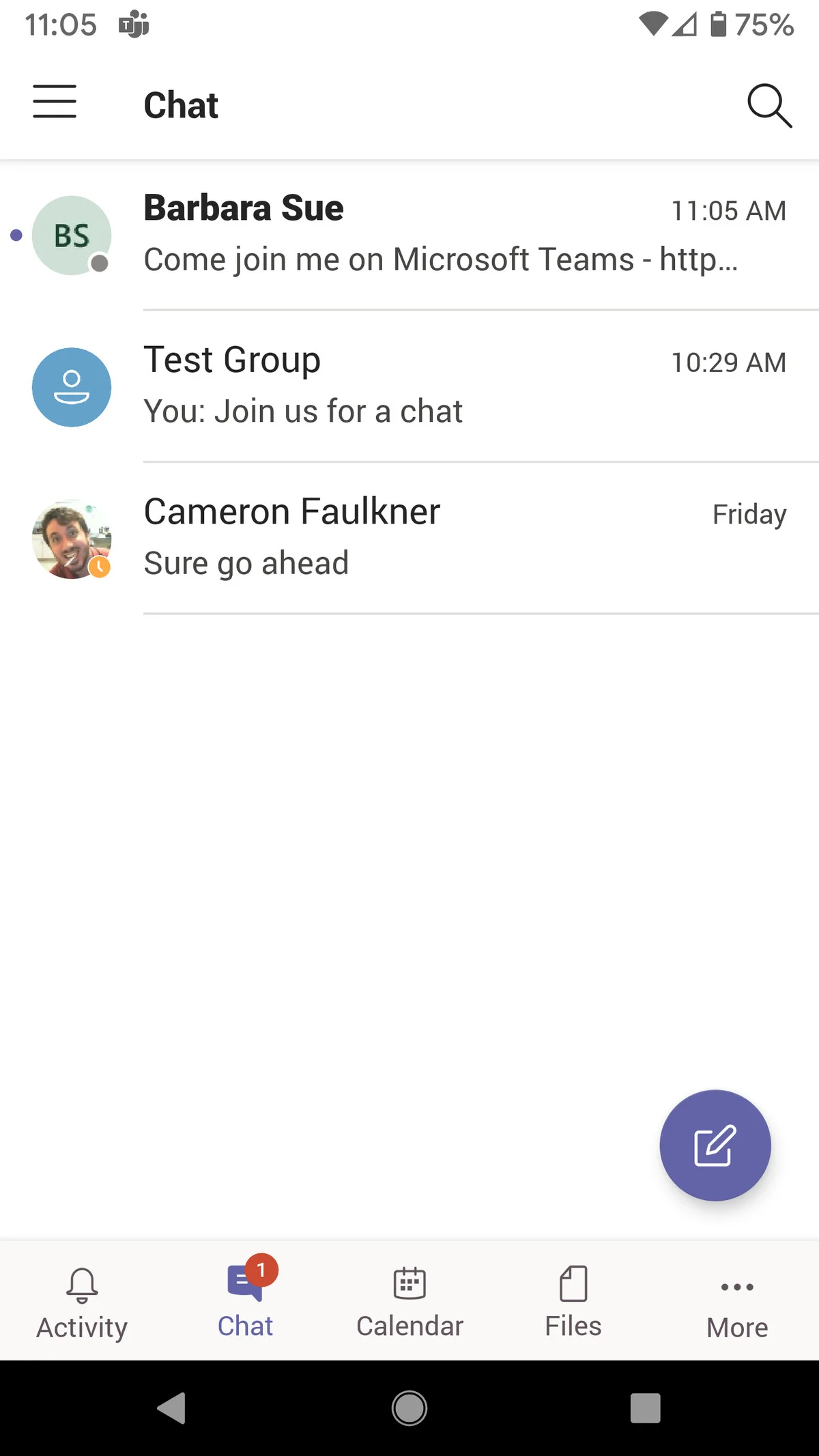
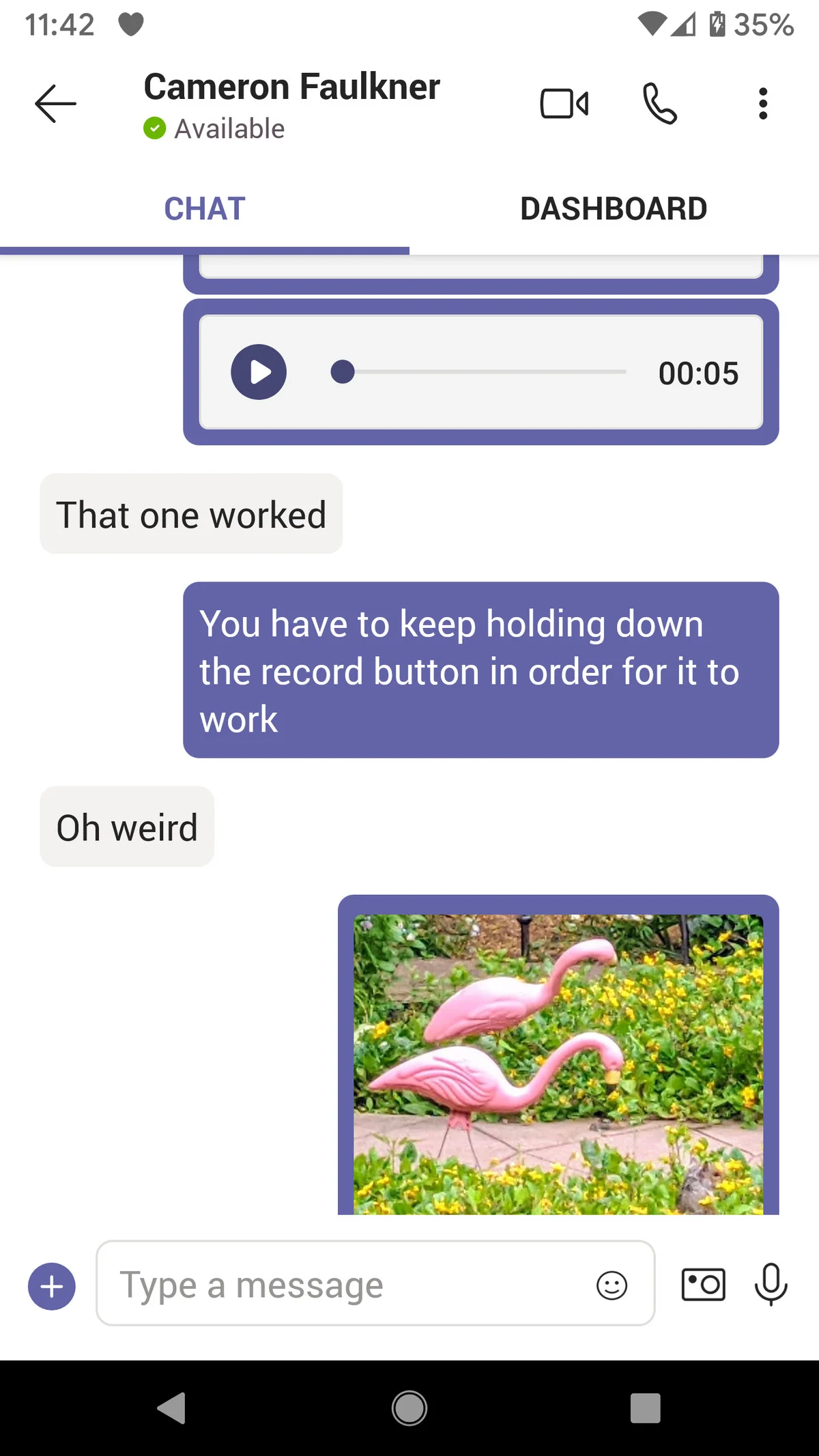
To start a chat, tap the "Chat" icon. This page will list the person or group of people you recently talked to; select one to start a new conversation. To start a session with a new person, tap the pencil/paper icon and you will be invited to enter the person's name, phone number, or email address. (You can allow the team to access your contacts to make it easier.) You can also start group chats with up to 20 people and name the groups to use again.
Once you have identified the person you wish to chat with, select "Send invitation". They'll get a notification that you started the chat, and they'll be invited to download Teams (assuming they haven't already). After they log in, you will receive a notification that they want to chat with you, and you can accept or block them.
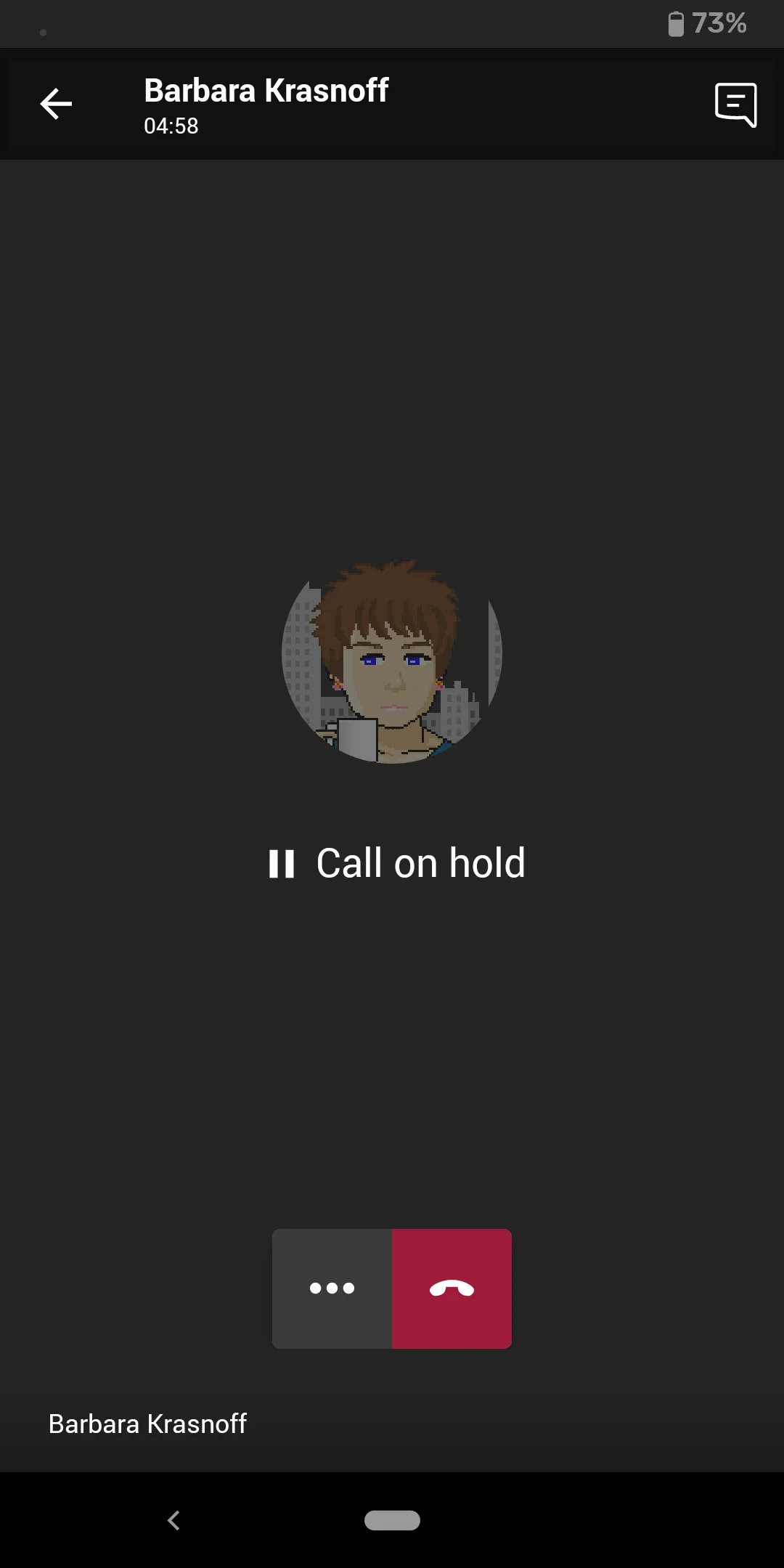

The Teams chat app, especially the beta version, works well and has some interesting features. The two icons to the left of the message bar allow you to insert a photo or audio clip into the chat.
Note: while you are creating an audio clip using the app, you will need to keep holding the app's “record” button until your message is finished.
Above the chat area, the video and phone icons allow you to turn the chat into a video session or an audio-only session. There is no real difference between the two; the audio session only blocks the cameras of the participants.
Read More: Microsoft condemns Apple's App Store policies
Currently, the features available for video conversations are somewhat limited. There's no recording feature (although there is screen sharing), and you can't change the size or even the placement of the video. Of course, Microsoft calls this a preview; additional changes may come in time.
Meanwhile, Teams' ease of use and integration with Microsoft's calendar and the OneDrive app can make it immensely useful for many.
Keywords: microsoft teams meeting, how to use microsoft teams, microsoft teams tutorial, microsoft teams tutorial 2020
Also Read:
Prev Post:
Next Post:
